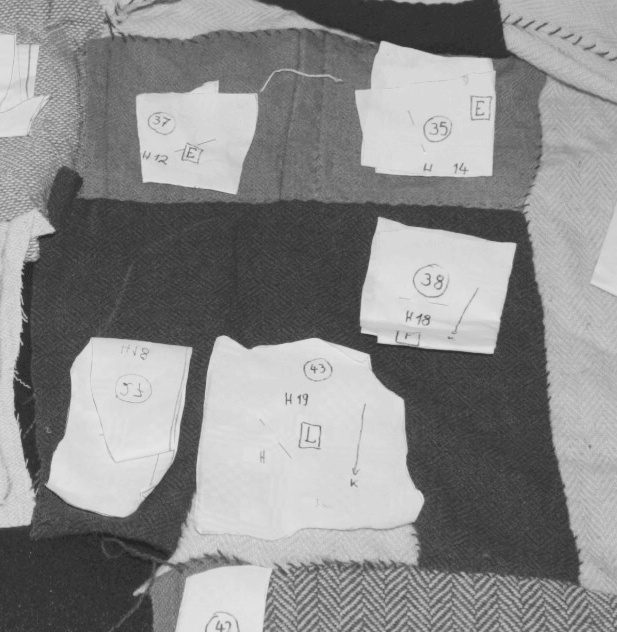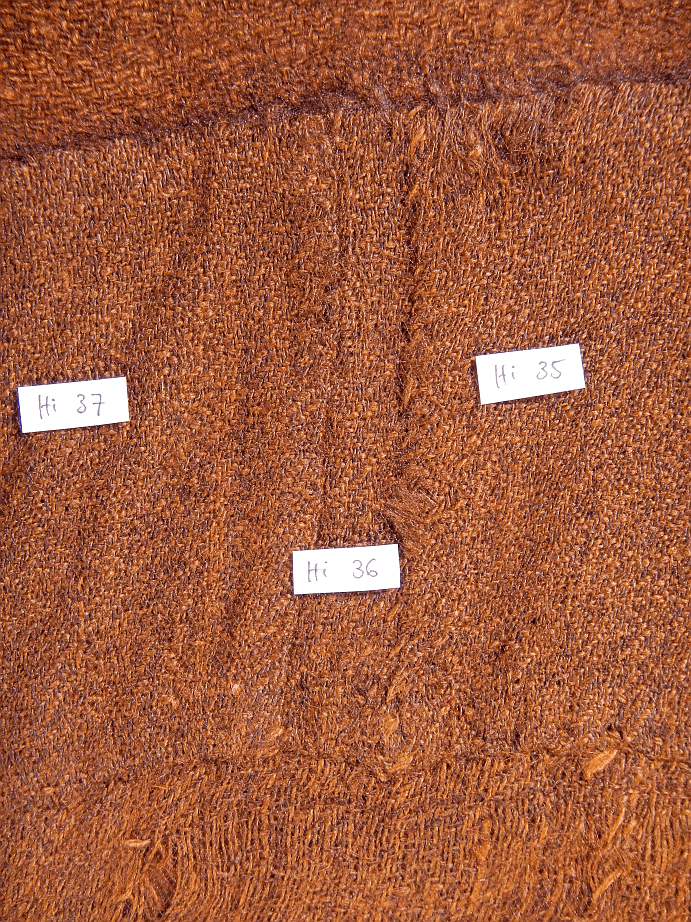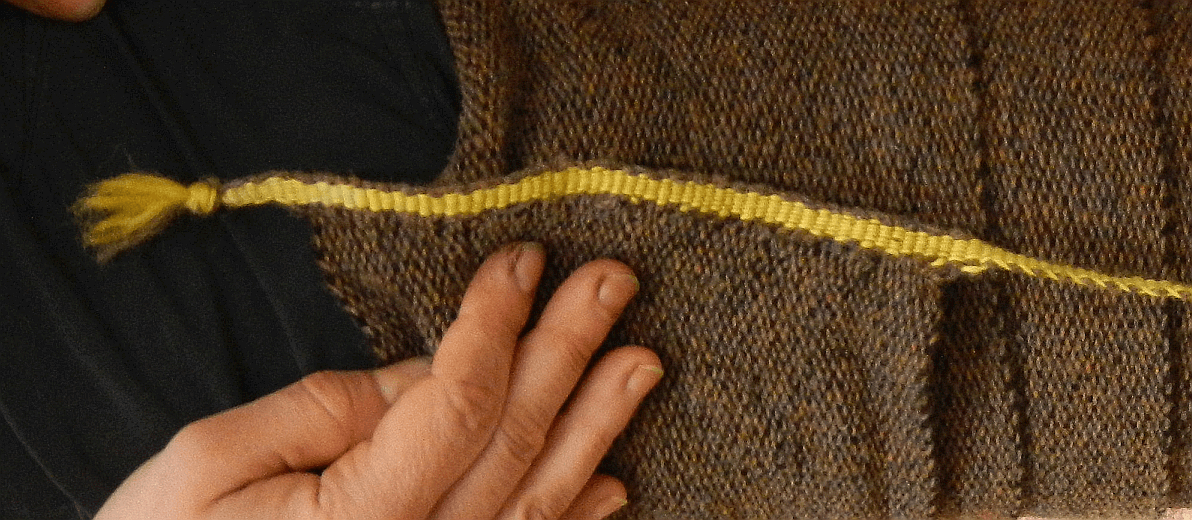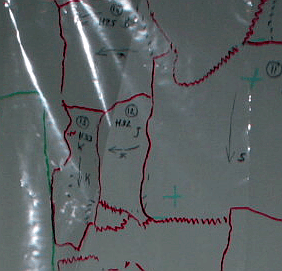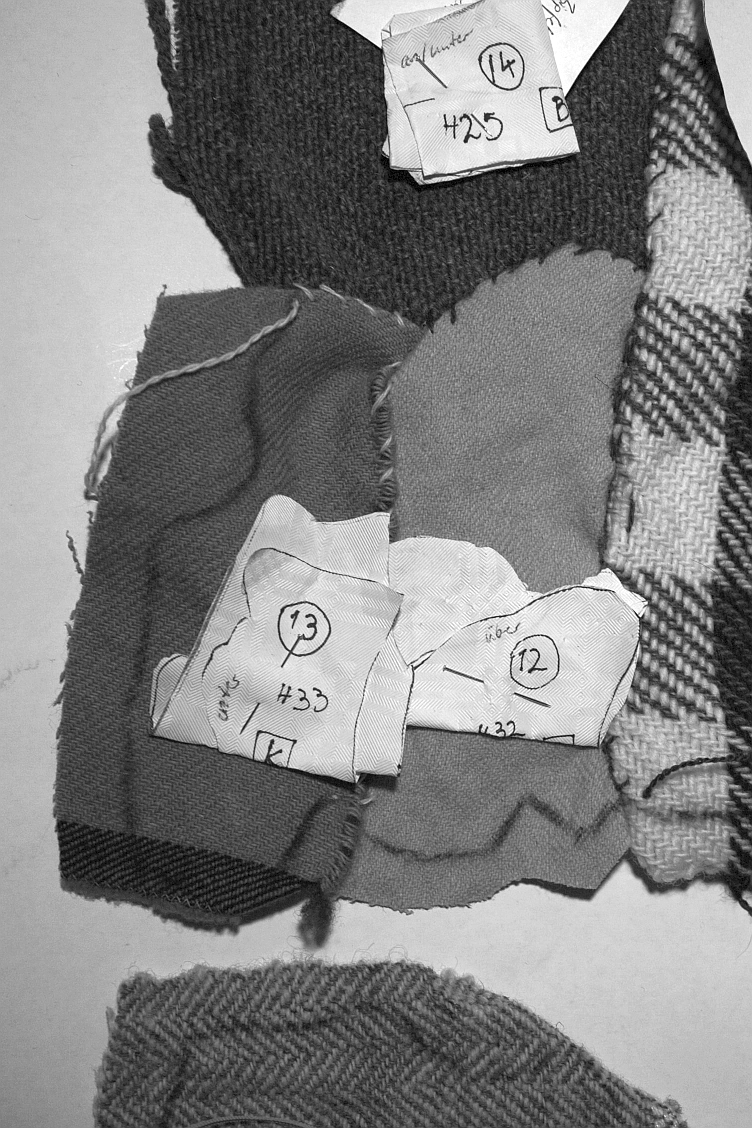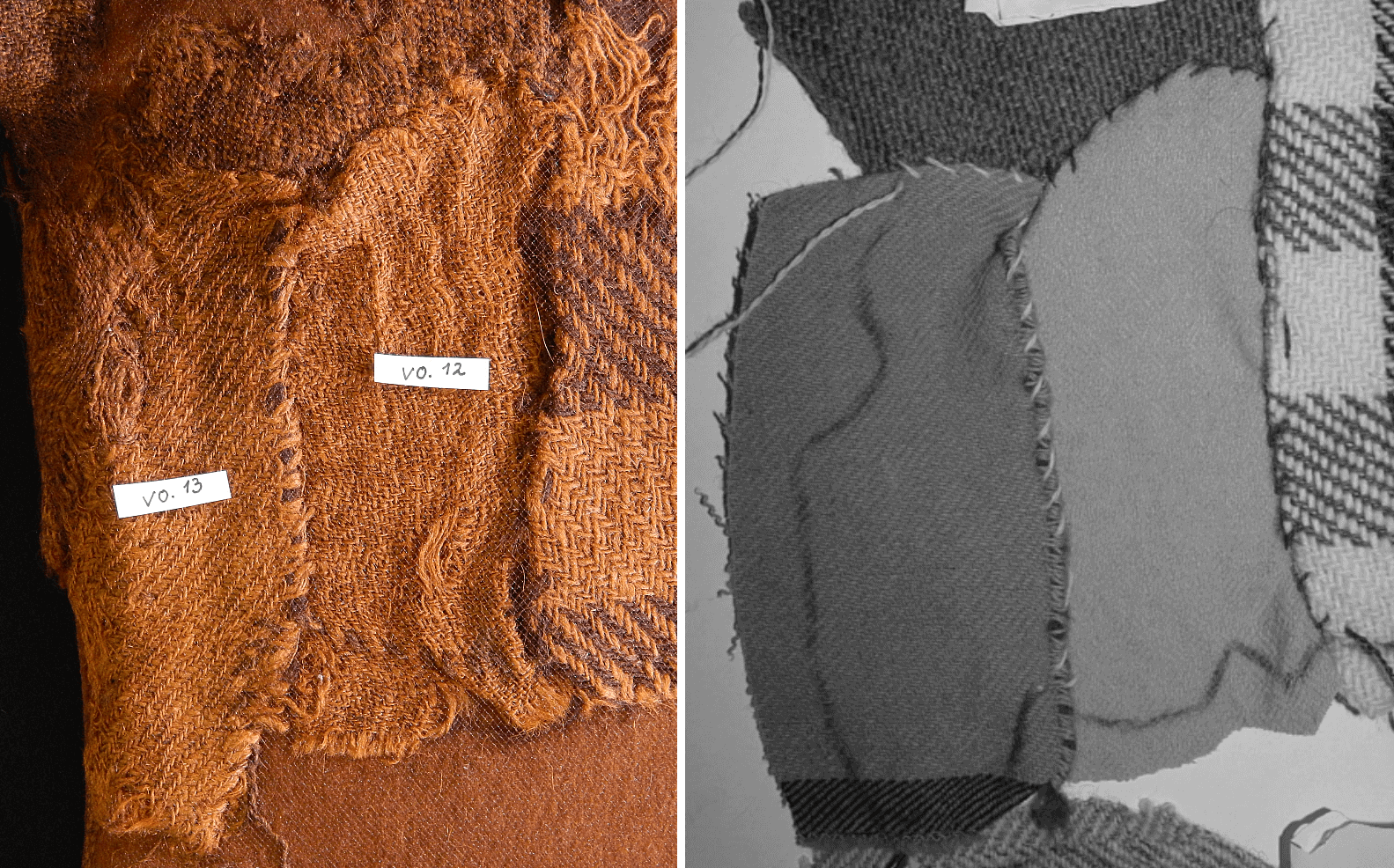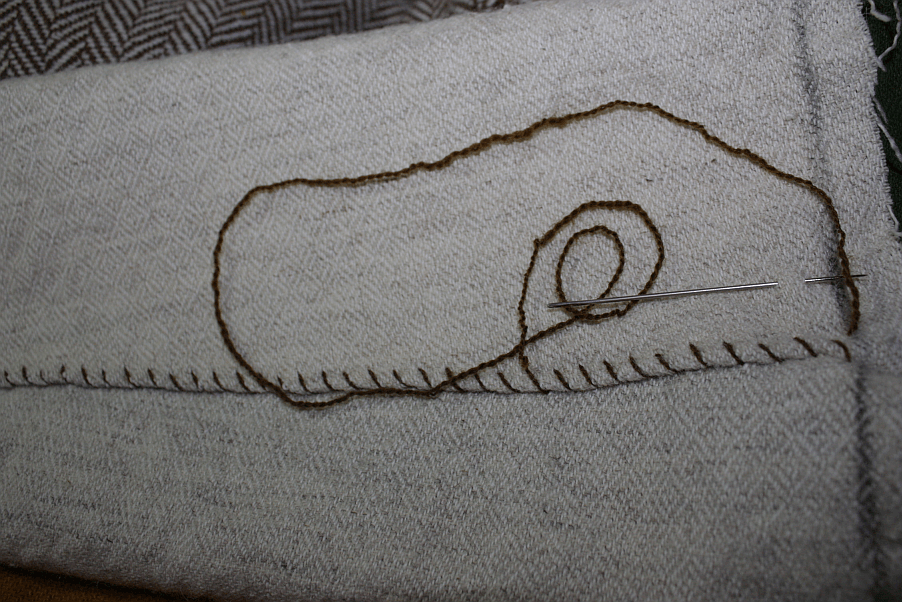Work on the shirt is progressing - it's a rather simple one, oriented in measurements on the tunic reconstruction, and sewn from hand-woven linen. The cloth has a charmingly large number of weaving faults, which is rather nice for a shirt to fit a probably quite poor man, though my stitching is the usual - I realised too late that I might have done larger, sloppier stitches.
It's fun and a nice feeling, though, to do "proper" seams and hems for a bit after all the many very coarse seams on the tunic itself - which means I'm quite enjoyng myself.
There was a slight, um, complication while cutting, though, in form of not very helpful furry help:
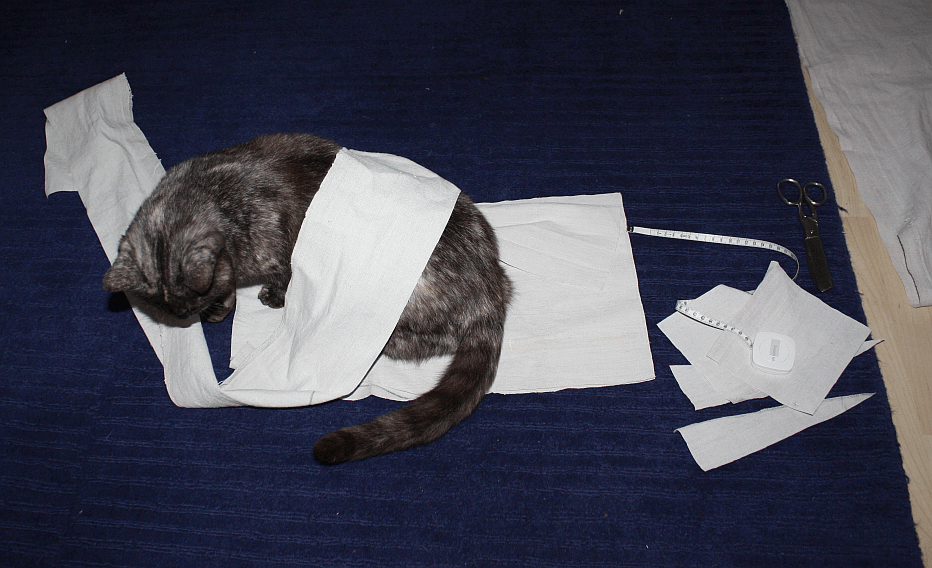
Usually Madame doesn't care very much about my textile shenanigans, apart from having to sit on every bit of fabric that happens to lie on the floor, but she was especially enthusiastic today, and actually attacked the dangerous moving cloth...It did lose its attraction enough after a while, though, so I could go on and finish my work. Everything is lined up for assembly now, and seams will be kept as simple as possible, so it should be finished soon.
It's fun and a nice feeling, though, to do "proper" seams and hems for a bit after all the many very coarse seams on the tunic itself - which means I'm quite enjoyng myself.
There was a slight, um, complication while cutting, though, in form of not very helpful furry help:

Usually Madame doesn't care very much about my textile shenanigans, apart from having to sit on every bit of fabric that happens to lie on the floor, but she was especially enthusiastic today, and actually attacked the dangerous moving cloth...It did lose its attraction enough after a while, though, so I could go on and finish my work. Everything is lined up for assembly now, and seams will be kept as simple as possible, so it should be finished soon.




